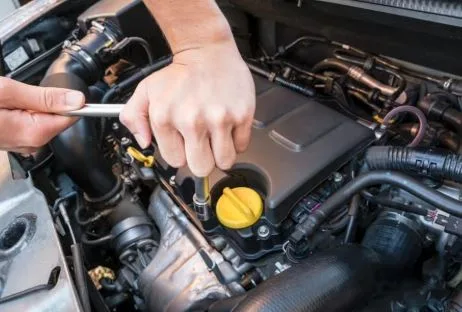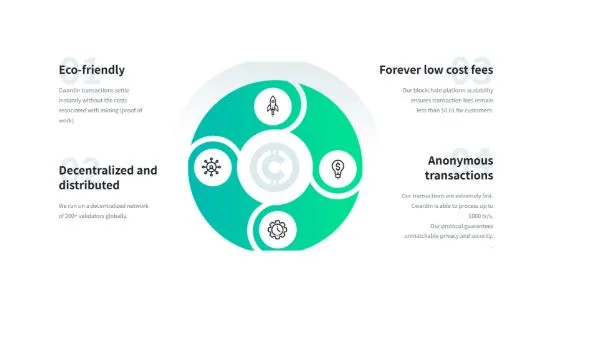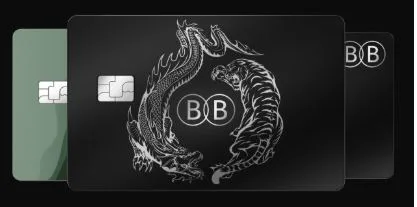Stop Wasting Money on Wrong Auto Parts: The VIN Code Solution
The $420 Lesson I’ll Never Forget
Two years ago, I needed new brake rotors for my Subaru Outback. Searched online for “2018 Subaru Outback brake rotors,” found a great price, ordered them. When the package arrived, I immediately saw the problem – these rotors were for the base model. My Outback has the optional upgraded braking system, which uses completely different rotors.
Return shipping cost me $45. Reordering the correct parts took another week. Total waste: $420 in wrong parts, shipping fees, and lost time. That expensive mistake taught me about Vehicle Identification Numbers and how they prevent exactly this kind of disaster. Now I use my VIN every single time I buy parts, and I haven’t ordered a wrong part since. You can check any vehicle’s exact specifications at https://auto-shop.dp.ua/vin to see what I’m talking about.
Understanding Your Vehicle’s VIN
What Makes VIN Codes Special
Your VIN isn’t just a random number stamped on your car. It’s a detailed code that describes every significant specification about your vehicle – engine type, transmission, factory options, assembly location, production date, and more.
Think of it like this: if you tell a parts seller you have a “2020 Honda Civic,” they still don’t know if you have the 1.5L or 2.0L engine, manual or CVT transmission, sedan or hatchback body, EX or Sport trim. All these variations use different parts. Your VIN tells them exactly which configuration you have.
VIN Structure Breakdown
Modern VINs contain 17 characters, each section revealing specific information:
Position 1-3 (World Manufacturer ID): Country and manufacturer. Examples: “1FA” = Ford USA, “JHM” = Honda Japan, “WBA” = BMW Germany.
Position 4-8 (Vehicle Attributes): Model, body type, engine, safety systems. This section differentiates a Civic LX from a Civic Sport, a 4-cylinder from a V6.
Position 9 (Security Check): Mathematical validation that the VIN is authentic, not counterfeit or mistyped.
Position 10 (Model Year): Letter code representing the year. “L” = 2020, “M” = 2021, “N” = 2022. Some letters are skipped to avoid confusion with numbers.
Position 11 (Factory Code): Identifies the specific assembly plant where your vehicle was built.
Position 12-17 (Production Number): Your vehicle’s unique serial number from that factory’s production line.
This standardized system has been mandatory since 1981. Every vehicle sold in North America uses this exact format.
Locating Your VIN
Quick Access Points
Through the Windshield: Stand outside your car on the driver’s side. Look at the bottom corner of the windshield where it meets the dashboard. The VIN should be visible on a small metal plate. This location is specifically chosen for easy verification by police, inspectors, and you.
Door Frame Sticker: Open the driver’s door and examine the door jamb – the area where the door latches. You’ll find a sticker or plate with the VIN, along with tire pressure specs, weight ratings, and paint codes.
Under the Hood: Pop your hood and check the firewall (the wall between engine and passenger compartment), radiator support, or near the hood latch. Some manufacturers place a duplicate VIN plate here.
Insurance Card: Your insurance documents always include your VIN. Same with registration, title, and service records.
Owner’s Manual: Many manufacturers print the VIN inside the front cover or on a specific page designated for vehicle information.
I photographed my VIN from four different locations and saved the photos in a phone folder labeled “Vehicle Info.” Takes 30 seconds, saves me time every time I need it.
How to Shop Using Your VIN
The Right Way to Search
Step 1: Get Your Complete VIN You need all 17 characters, accurate to the letter. Even one wrong character sends you down the wrong path. The number “0” versus letter “O” – they look similar but mean completely different things.
Step 2: Choose a VIN-Compatible Retailer Not all parts sites offer VIN search. Look for retailers with prominent “Search by VIN” or “Enter Your VIN” options. Major players like RockAuto, AutoZone, and O’Reilly all have this functionality.
Step 3: Input Your VIN Carefully Type slowly or paste from your saved photo. Some sites want all 17 characters without spaces. Others automatically format with dashes. Follow their specific format.
Step 4: Confirm Vehicle Details After entering your VIN, the system displays detailed vehicle information. Verify every detail matches your actual vehicle: – Correct year – Right make and model – Accurate engine size – Proper transmission type – Correct drive system (2WD vs 4WD)
If anything looks wrong, stop. Double-check your VIN entry.
Step 5: Select Part Category Navigate to the type of part you need. The catalog now shows only components compatible with your specific vehicle configuration.
Step 6: Review Available Options You’ll typically see multiple choices: – Original equipment (OEM) – highest price, guaranteed fit – Premium aftermarket – comparable quality, lower price – Standard aftermarket – meets requirements, budget-friendly – Economy options – basic function, lowest cost
Step 7: Check Part Numbers and Reviews Before adding to cart, verify the manufacturer part number if you have access to your vehicle’s service manual or existing part. Read customer reviews, especially noting fitment issues.
Step 8: Document Your Purchase Save the order confirmation with part numbers. This creates a maintenance history and helps with future purchases or warranty claims.
My Personal Success Story
Last winter, my battery died. Instead of just buying “a battery for my car,” I used my VIN to search. Discovered my Jeep Grand Cherokee has two different battery specifications depending on engine type.
My 3.6L V6 requires a different battery than the 5.7L V8 version. Who knew? Without VIN search, I might have bought the wrong battery – wrong terminal placement, wrong cold cranking amps, wrong physical size.
Used VIN, found the exact battery: Group 48 (H6), 760 CCA, top-post terminals. Ordered online for $128. Local store wanted $195 for the same Interstate battery. Arrived in two days, installed it myself in 10 minutes.
Total savings: $67 plus installation fees. All because I spent 30 seconds entering my VIN.
Common VIN Shopping Mistakes
Trusting Year and Model Alone
This is the number one mistake. A “2019 Ford F-150” could have six different engines, three transmissions, multiple bed lengths, various cab configurations. Each combination uses different parts.
Your VIN specifies exactly which configuration you have. Don’t assume – verify.
Mixing Up Similar Characters
“O” and “0” look identical in some fonts. So do “I” and “1,” “Q” and “O,” “S” and “5.” One wrong character = wrong parts. Always double-check your VIN entry against the vehicle description the system returns.
Ignoring Mid-Year Changes
Manufacturers sometimes make changes during a production year. A vehicle built in September might have different specs than the same model built in March. The VIN accounts for these variations through the production date encoded in it.
Not Considering Factory Options
Two identical-looking cars might have completely different parts requirements due to factory options. Sport packages, towing packages, cold weather packages – these add-ons change component specifications significantly.
Advantages of VIN-Based Parts Shopping
Eliminates Guesswork
You’re not assuming, hoping, or trusting generic descriptions. The VIN tells the parts database exactly what components fit your specific vehicle build.
I’ve ordered 60+ parts using VIN searches over two years. Zero wrong parts. Before VIN? I had five wrong parts in eight months.
Saves Research Time
Instead of spending 30 minutes reading specifications and comparing options, VIN search narrows results to only what fits. Five minutes from search to checkout.
Reduces Returns and Exchanges
Returns cost time and money – your time packaging and shipping, return shipping fees, waiting for refunds. VIN-based shopping drops return rates to essentially zero.
Provides Warranty Documentation
If you need warranty service on a purchased part, having bought by VIN proves you ordered the correct component for your vehicle. Makes warranty claims straightforward.
Reveals Unknown Vehicle Features
Sometimes VIN searches reveal options you didn’t know your vehicle had. I discovered my Honda had the premium audio system only after running a VIN search. Explained why standard replacement speakers didn’t fit right.
When VIN Alone Isn’t Sufficient
Heavily Modified Vehicles
If you’ve done major modifications – engine swaps, suspension lifts, brake upgrades – your VIN reflects the original factory configuration, not current setup. You’ll need specific part numbers or measurements instead.
Pre-1981 Vehicles
Cars built before 1981 use inconsistent VIN formats with fewer characters. Classic car parts shopping requires alternative methods like body tags, casting numbers, or build sheets.
Imported Gray Market Vehicles
Some imports brought in outside official channels have VINs not recognized by US parts databases. These vehicles often require sourcing parts internationally.
Practical VIN Usage Tips
Keep It Accessible
I store my VIN in multiple places: – Photo album on my phone titled “Car Documents” – Note in my phone’s app with my insurance info – Written on a business card in my wallet – Saved in my computer’s password manager
Sounds paranoid, but I’ve needed my VIN in parking lots, on hold with customer service, and in parts stores more times than I can count.
Build a Parts History
Create a simple spreadsheet documenting every part purchase: – Date purchased – Retailer and price – Manufacturer part number – Installation date and mileage
This record helps with future maintenance planning and increases resale value by demonstrating documented care.
Use VIN for Price Comparison
Even if you plan to buy locally, use VIN-based online searches to research options and fair pricing. Walk into the store knowing exactly what you need and what it should cost.
Check for Recalls Regularly
Some VIN lookup tools show open recalls and technical service bulletins for your specific vehicle. Free information that can prevent expensive failures or safety issues.
Final Thoughts
My $420 mistake taught me an expensive lesson about auto parts shopping. Your VIN eliminates the guesswork, assumptions, and costly errors that plague traditional parts shopping.
The VIN is already on your car. You just need to use it. Every purchase. Every time. The 30 seconds spent entering your VIN saves hours of frustration and hundreds of dollars in wrong parts.
I haven’t bought a wrong part in two years. Not one. That’s the power of VIN-based shopping.
Take action now: Photograph your VIN from the windshield. Save it on your phone. Next time you need parts, use it. See the difference for yourself.






